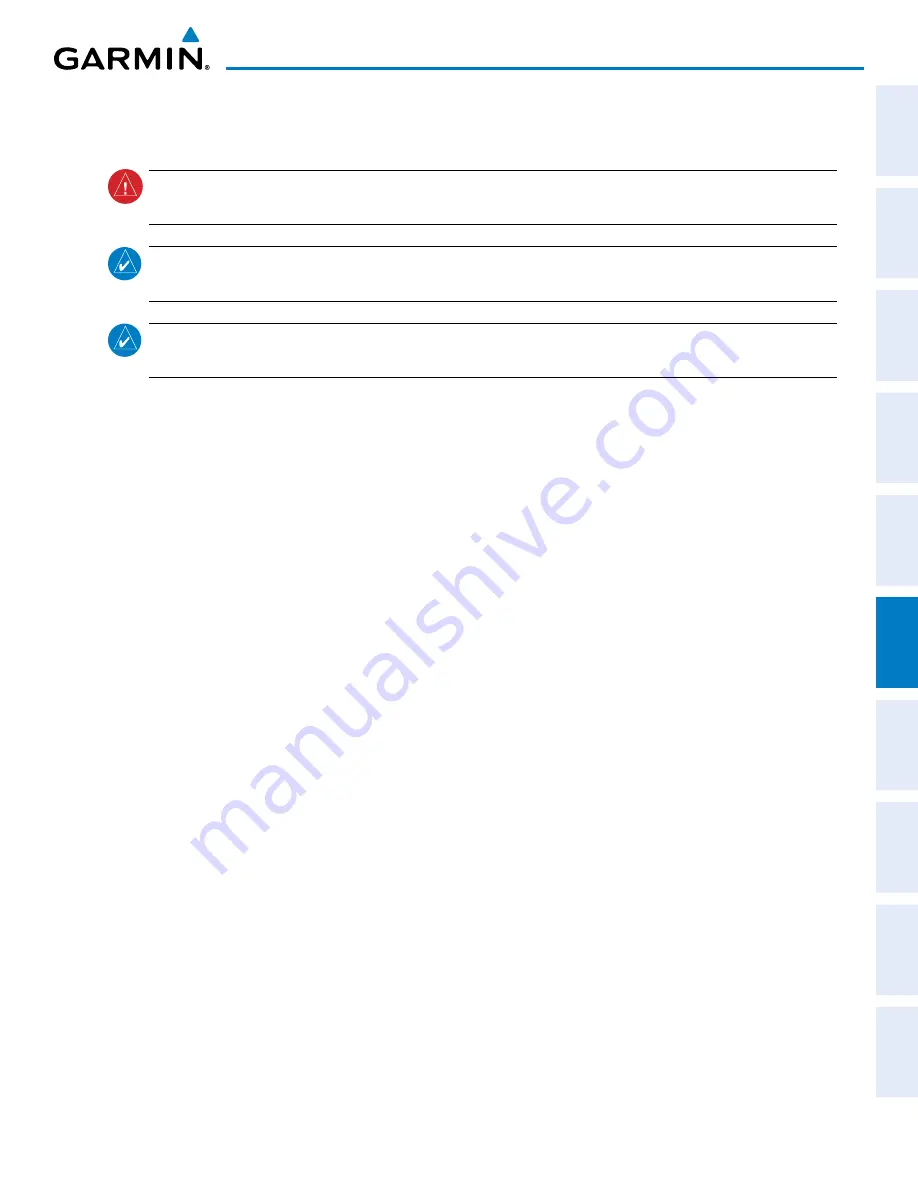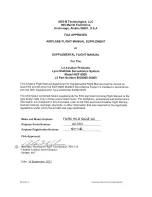
190-00820-11 Rev. A
Pilot’s Guide for the Cirrus SR2x with Cirrus Perspective by Garmin
423
HAZARD AVOIDANCE
SY
STEM
O
VER
VIEW
FLIGHT
INSTRUMENTS
EIS
AUDIO P
ANEL
& CNS
FLIGHT
MANA
GEMENT
HAZARD
AV
OID
ANCE
AFCS
ADDITIONAL
FEA
TURES
APPENDICES
INDEX
6.6 TERRAIN-SVS
WARNING:
Do not use Terrain-SVS information for primary terrain avoidance. Terrain-SVS is intended only
to enhance situational awareness.
NOTE:
Terrain-SVS is included with the Synthetic Vision Technology (SVT) system option. If the TAWS-B
option is also installed, it will take precedence over Terrain-SVS.
NOTE:
Terrain-SVS is information is not displayed if the aircraft is outside of the installed terrain database
coverage area.
Terrain-SVS is a terrain awareness system integrated with the optional Synthetic Vision Technology (SVT)
system. Terrain-SVS provides visual and auditory alerting to indicate the presence of threatening terrain or
obstacles relevant to the projected flight path. For detailed information regarding SVT, refer to the Additional
Features section.
Terrain-SVS does not comply with TSO-C151b certification standards. It increases situational awareness and
aids in reducing controlled flight into terrain (CFIT). Do not confuse Terrain-SVS with the optional Terrain
Awareness and Warning System (TAWS). TAWS is more sophisticated and robust, and it is TSO-C151b certified.
Although the terrain and obstacle color map displays are the same, TAWS uses more sophisticated algorithms to
assess aircraft distance from terrain and obstacles and provides additional alerting capabilities.
Terrain-SVS does not provide the following:
• Premature Descent Alerting (PDA)
• Excessive Descent Rate (EDR)
• Negative Climb Rate (NCR)
• Descent to 500 Feet Callout (DFC)
Terrain-SVS requires the following components to operate properly:
• Valid 3-D GPS position
• Valid terrain/obstacle database
Terrain-SVS displays altitudes of terrain and obstructions relative to the aircraft position and altitude with
reference to a database that may contain inaccuracies. Terrain and obstructions are shown only if they are in the
database. Terrain and obstacle information should be used as an aid to situational awareness. They should never
be used to navigate or maneuver around terrain.
Note that all obstructions may not be available in the terrain and obstacle database. No terrain and obstacle
information is shown without a valid 3-D GPS position.
The GPS receiver provides the horizontal position and altitude. GPS altitude is derived from satellite position.
GPS altitude is then converted to the height above geodetic sea level (GSL), which is the height above mean sea
level calculated geometrically. GSL altitude is used to determine terrain and obstacle proximity. GSL altitude
accuracy is affected by satellite geometry, but is not subject to variations in pressure and temperature that normally
Содержание CIRRUS PERSPECTIVE SR2x
Страница 2: ......
Страница 6: ...Pilot s Guide for the Cirrus SR2x with Cirrus Perspective by Garmin 190 00820 11 Rev A Blank Page...
Страница 751: ......




































